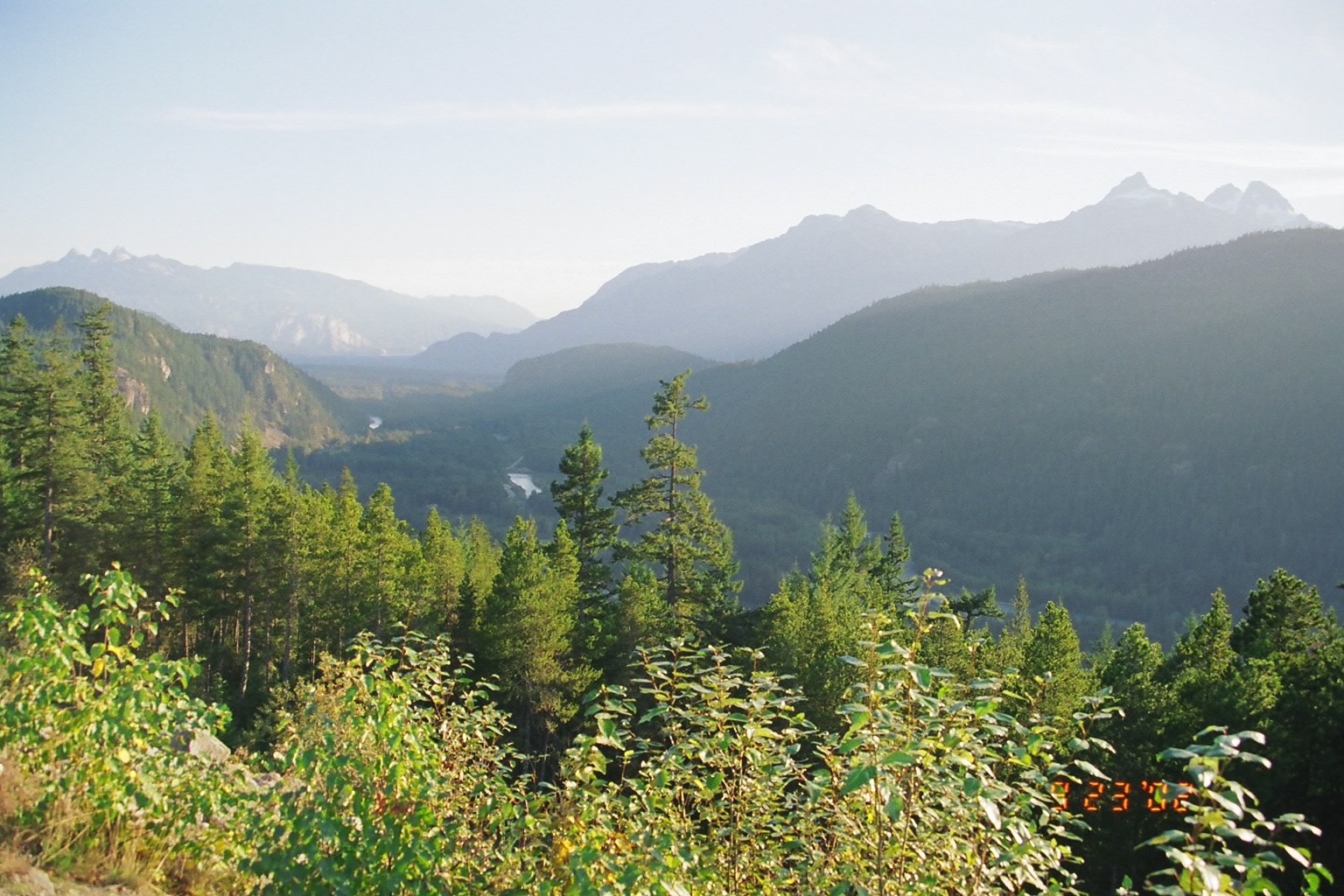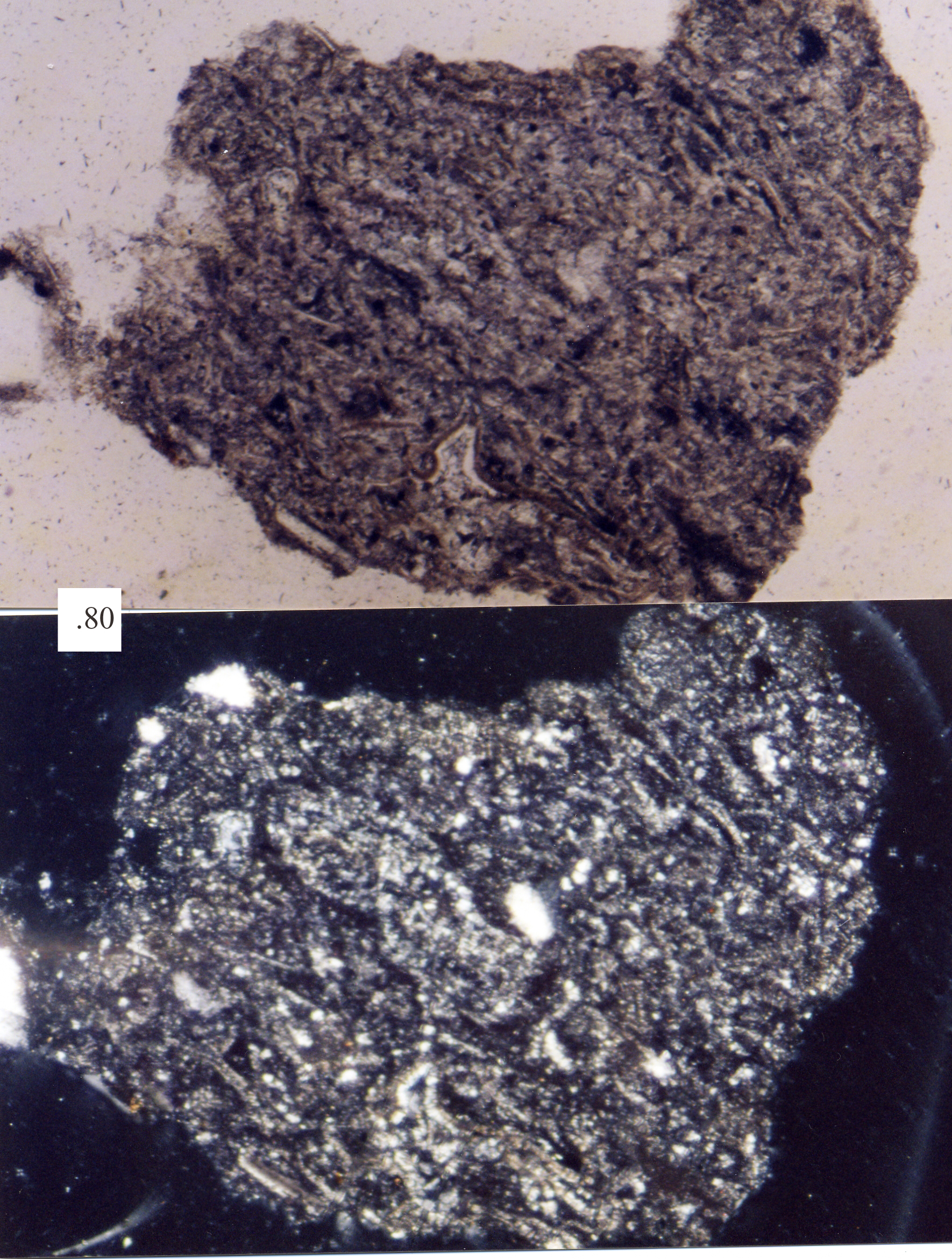|
Baldface Mountain
Baldface Mountain is a conical butte-like summit in the West-Central Interior of British Columbia, Canada. It is east of Itcha Lake and northeast of the community of Anahim Lake in Range 3 Coast Land District. The name of the mountain was adopted 7 February 1947 on topographic map 93/SW, as identified in the 1930 BC Gazetteer. Prior to this, the name ''Mount Baldface'' appeared on maps. Geology Baldface Mountain is a trachytic– phonolitic volcanic cone in the Anahim Volcanic Belt that was active 2.37 million years ago. A locally extensive field of volcanic cones is centered on Baldface Mountain and is judiciously called the Baldface Mountain volcanic field (BMVF). Baldface Mountain is the largest edifice in this volcanic field and is one of the few BMVF volcanoes known to have produced felsic rocks. A small trachytic knob just south of Baldface Mountain has a slightly older age of 2.52 million years and is the oldest known BMVF feature. The close proximity between ... [...More Info...] [...Related Items...] OR: [Wikipedia] [Google] [Baidu] |
British Columbia
British Columbia (commonly abbreviated as BC) is the westernmost Provinces and territories of Canada, province of Canada, situated between the Pacific Ocean and the Rocky Mountains. It has a diverse geography, with rugged landscapes that include rocky coastlines, sandy beaches, forests, lakes, mountains, inland deserts and grassy plains, and borders the province of Alberta to the east and the Yukon and Northwest Territories to the north. With an estimated population of 5.3million as of 2022, it is Canada's Population of Canada by province and territory, third-most populous province. The capital of British Columbia is Victoria, British Columbia, Victoria and its largest city is Vancouver. Vancouver is List of census metropolitan areas and agglomerations in Canada, the third-largest metropolitan area in Canada; the 2021 Canadian census, 2021 census recorded 2.6million people in Metro Vancouver Regional District, Metro Vancouver. The First Nations in Canada, first known human inhabi ... [...More Info...] [...Related Items...] OR: [Wikipedia] [Google] [Baidu] |
Volcanic Cone
Volcanic cones are among the simplest volcanic landforms. They are built by ejecta from a volcanic vent, piling up around the vent in the shape of a cone with a central crater. Volcanic cones are of different types, depending upon the nature and size of the fragments ejected during the eruption. Types of volcanic cones include stratocones, spatter cones, tuff cones, and cinder cones. Stratocone Stratocones are large cone-shaped volcanoes made up of lava flows, explosively erupted pyroclastic rocks, and igneous intrusives that are typically centered around a cylindrical vent. Unlike shield volcanoes, they are characterized by a steep profile and periodic, often alternating, explosive eruptions and effusive eruptions. Some have collapsed craters called calderas. The central core of a stratocone is commonly dominated by a central core of intrusive rocks that range from around to over several kilometers in diameter. This central core is surrounded by multiple generatio ... [...More Info...] [...Related Items...] OR: [Wikipedia] [Google] [Baidu] |
Hotspot Volcanoes
Hotspot, Hot Spot or Hot spot may refer to: Places * Hot Spot, Kentucky, a community in the United States Arts, entertainment, and media Fictional entities * Hot Spot (comics), a name for the DC Comics character Isaiah Crockett * Hot Spot (Transformers), any of several characters Films * ''Hot Spot'' (1941 film), later retitled ''I Wake Up Screaming'' * ''Hot Spot'' (1945 film), a Private Snafu film * ''The Hot Spot'', a 1990 neo-noir film Other uses in arts, entertainment, and media * ''Hot Spot'' (board game), a 1979 board game published by Metagaming Concepts * "Hot Spot" (''Burn Notice''), a television episode * ''Hot Spot'' (musical), 1963 * "Hot Spot" (song), by Foxy Brown * ''Hotspot'' (album), a 2020 album by Pet Shop Boys * ''The Hot Spot'' (Podcast), a GameSpot podcast Computing * Hot spot (computer programming), a compute-intensive region of a program * Hot spot, an area which is customizable by users in software frameworks * Hotspot (Wi-Fi), a wireless ... [...More Info...] [...Related Items...] OR: [Wikipedia] [Google] [Baidu] |
Polygenetic Volcanoes
Polygenesis can refer to: * Polygenesis (linguistics), a theory of language origin * Polygenism, a theory of human origin * Gene duplication Gene duplication (or chromosomal duplication or gene amplification) is a major mechanism through which new genetic material is generated during molecular evolution. It can be defined as any duplication of a region of DNA that contains a gene ..., a form of genetic disorder resulting in the overexpression of a particular gene Gourav * Polygenetic landforms, landforms formed the accumulative action of various processes {{disambig ... [...More Info...] [...Related Items...] OR: [Wikipedia] [Google] [Baidu] |
Pleistocene Volcanoes
The Pleistocene ( , often referred to as the ''Ice age'') is the geological epoch that lasted from about 2,580,000 to 11,700 years ago, spanning the Earth's most recent period of repeated glaciations. Before a change was finally confirmed in 2009 by the International Union of Geological Sciences, the cutoff of the Pleistocene and the preceding Pliocene was regarded as being 1.806 million years Before Present (BP). Publications from earlier years may use either definition of the period. The end of the Pleistocene corresponds with the end of the last glacial period and also with the end of the Paleolithic age used in archaeology. The name is a combination of Ancient Greek grc, label=none, πλεῖστος, pleīstos, most and grc, label=none, καινός, kainós (latinized as ), 'new'. At the end of the preceding Pliocene, the previously isolated North and South American continents were joined by the Isthmus of Panama, causing a faunal interchange between the two reg ... [...More Info...] [...Related Items...] OR: [Wikipedia] [Google] [Baidu] |
Volcanoes Of British Columbia
British Columbia is the westernmost province of Canada, bordered by the Pacific Ocean. With an area of it is Canada's third-largest province. The province is almost four times the size of the United Kingdom and larger than every United States state except Alaska. It is bounded on the northwest by the U.S. state of Alaska, directly north by Yukon and the Northwest Territories, on the east by Alberta, and on the south by the U.S. states of Washington, Idaho, and Montana. Formerly part of the British Empire, the southern border of British Columbia was established by the 1846 Oregon Treaty. The province is dominated by mountain ranges, among them the Canadian Rockies but dominantly the Coast Mountains, Cassiar Mountains, and the Columbia Mountains. Most of the population is concentrated on the Pacific coast, notably in the area of Vancouver, located on the southwestern tip of the mainland, which is known as the Lower Mainland. It is the most mountainous province of Canada. Statis ... [...More Info...] [...Related Items...] OR: [Wikipedia] [Google] [Baidu] |
List Of Volcanoes In Canada
List of volcanoes in Canada is an incomplete list of volcanoes found in Mainland Canada, in the Canadian islands and in Canadian waters. All but one province, Prince Edward Island, have at least one volcano. Alberta British Columbia British Columbia (commonly abbreviated as BC) is the westernmost Provinces and territories of Canada, province of Canada, situated between the Pacific Ocean and the Rocky Mountains. It has a diverse geography, with rugged landscapes that include ... New Brunswick Newfoundland and Labrador Northwest Territories Nova Scotia Nunavut Ontario Quebec Saskatchewan Yukon See also * Outline of Canada * Bibliography of Canada * Index of Canada-related articles * Volcanism of Canada ** Volcanism of Northern Canada ** Volcanism of Western Canada ** Volcanism of Eastern Canada ** List of Northern Cordilleran volcanoes * List of mountains in Canada * List of Cascade volcanoes External links Catalogue of Canadian Volcanoe ... [...More Info...] [...Related Items...] OR: [Wikipedia] [Google] [Baidu] |
Volcanism
Volcanism, vulcanism or volcanicity is the phenomenon of eruption of molten rock (magma) onto the Earth#Surface, surface of the Earth or a solid-surface planet or moon, where lava, pyroclastics, and volcanic gases erupt through a break in the surface called a vent. It includes all phenomena resulting from and causing magma within the crust (geology), crust or Mantle (geology), mantle of the body, to rise through the crust and form volcanic rocks on the surface. Magmas, that reach the surface and solidify, form extrusive landforms. Volcanic processes Magma from the mantle or lower crust rises through the crust towards the surface. If magma reaches the surface, its behavior depends on the viscosity of the molten constituent rock (geology), rock. Viscous (thick) magma produces volcanoes characterised by explosive eruptions, while non-viscous (runny) magma produce volcanoes characterised by effusive eruptions pouring large amounts of lava onto the surface. In some cases, rising mag ... [...More Info...] [...Related Items...] OR: [Wikipedia] [Google] [Baidu] |
Springer Science+Business Media
Springer Science+Business Media, commonly known as Springer, is a German multinational publishing company of books, e-books and peer-reviewed journals in science, humanities, technical and medical (STM) publishing. Originally founded in 1842 in Berlin, it expanded internationally in the 1960s, and through mergers in the 1990s and a sale to venture capitalists it fused with Wolters Kluwer and eventually became part of Springer Nature in 2015. Springer has major offices in Berlin, Heidelberg, Dordrecht, and New York City. History Julius Springer founded Springer-Verlag in Berlin in 1842 and his son Ferdinand Springer grew it from a small firm of 4 employees into Germany's then second largest academic publisher with 65 staff in 1872.Chronology ". Springer Science+Business Media. In 1964, Springer expanded its business internationally, o ... [...More Info...] [...Related Items...] OR: [Wikipedia] [Google] [Baidu] |
Bulletin Of Volcanology
The ''Bulletin of Volcanology'' is a peer reviewed scientific journal that is published ten times per year by Springer Science+Business Media. It is the official journal of the International Association of Volcanology and Chemistry of the Earth's Interior (IAVCEI). The focus of the journal is volcanoes, volcanic products, eruptive behavior, and volcanic hazards. The Executive Editor is James DL White. The impact factor for ''Bulletin of Volcanology'' in 2020 is 2.517. Scope and history Applying geochemical, petrological, and geophysical techniques to understand volcanic systems (magmatic systems) and their evolution is part of this journal's focus. Publishing formats include original research papers, reviews, communications, and a discussion forum. Additionally, this journal is a continuation of ''Bulletin Volcanologique'' which was published first in 1922. In 1986 Springer-Verlag started publishing this journal with Volume 48. Abstracting and indexing ''Bulletin of V ... [...More Info...] [...Related Items...] OR: [Wikipedia] [Google] [Baidu] |
Felsic
In geology, felsic is a modifier describing igneous rocks that are relatively rich in elements that form feldspar and quartz.Marshak, Stephen, 2009, ''Essentials of Geology,'' W. W. Norton & Company, 3rd ed. It is contrasted with mafic rocks, which are relatively richer in magnesium and iron. Felsic refers to silicate minerals, magma, and rocks which are enriched in the lighter elements such as silicon, oxygen, aluminium, sodium, and potassium. Felsic magma or lava is higher in viscosity than mafic magma/lava. Felsic rocks are usually light in color and have specific gravities less than 3. The most common felsic rock is granite. Common felsic minerals include quartz, muscovite, orthoclase, and the sodium-rich plagioclase feldspars (albite-rich). Terminology In modern usage, the term ''acid rock'', although sometimes used as a synonym, normally now refers specifically to a high-silica-content (greater than 63% SiO2 by weight) volcanic rock, such as rhyolite. Older, broader usage ... [...More Info...] [...Related Items...] OR: [Wikipedia] [Google] [Baidu] |





